This year one thing I said I would focus more energy on is my Quilt Lab experiments. Our assignment for this month was to play with Bojagi, a traditional Korean patchwork technique. I’m happy to report that my first Bojagi project is complete.
I haven’t done a deep dive into the history of this art form. I understand that a Bojagi itself was originally a decorative wrapping cloth. It seems like the patchwork element has developed over time to add a decorative element, much like patchwork quilting. It is a way to take thrifty re-use of used fabrics and bring beauty to the mundane.
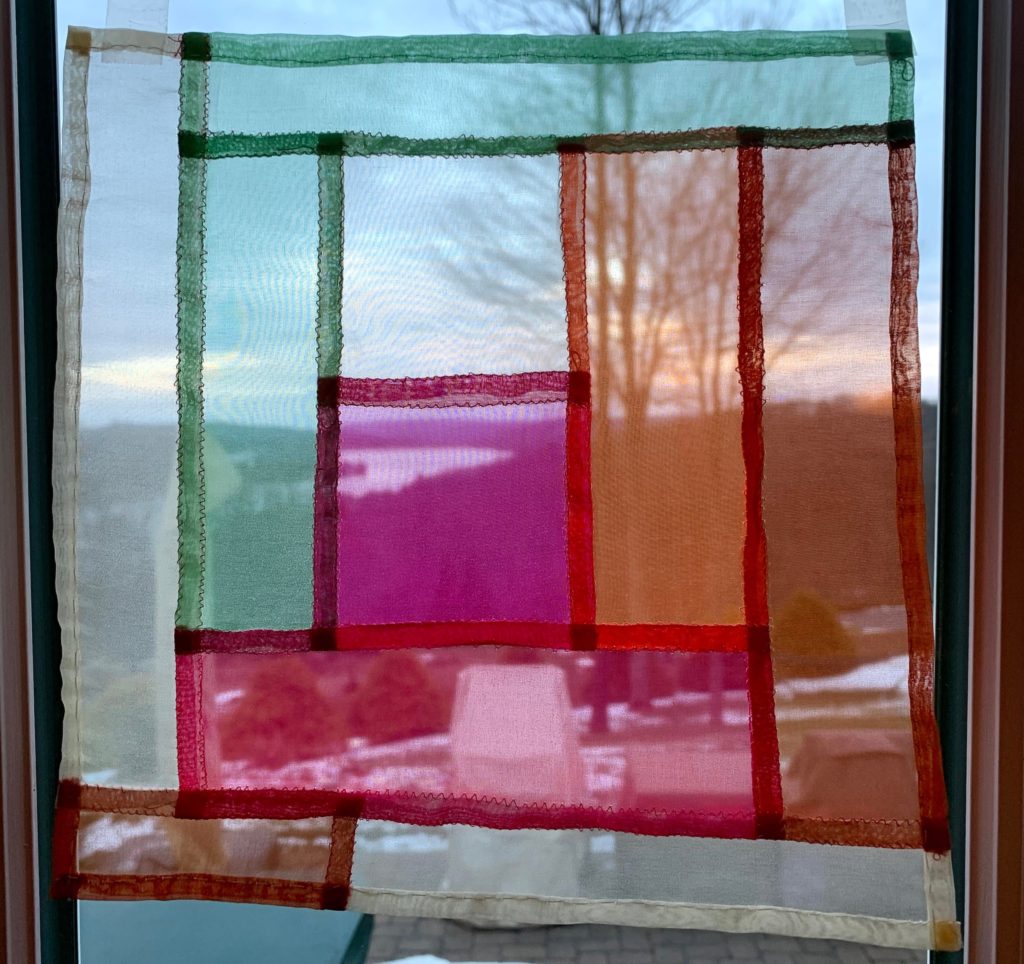
In 2018 I attended an exhibit and a lecture by Wonju Seo at Quilting by the Lake. It was lovely and an intriguing concept. The exhibit consisted of rather large scale patchwork pieces made of translucent silk. They way they were hung together made the areas of overlapping color change as you moved around the room.
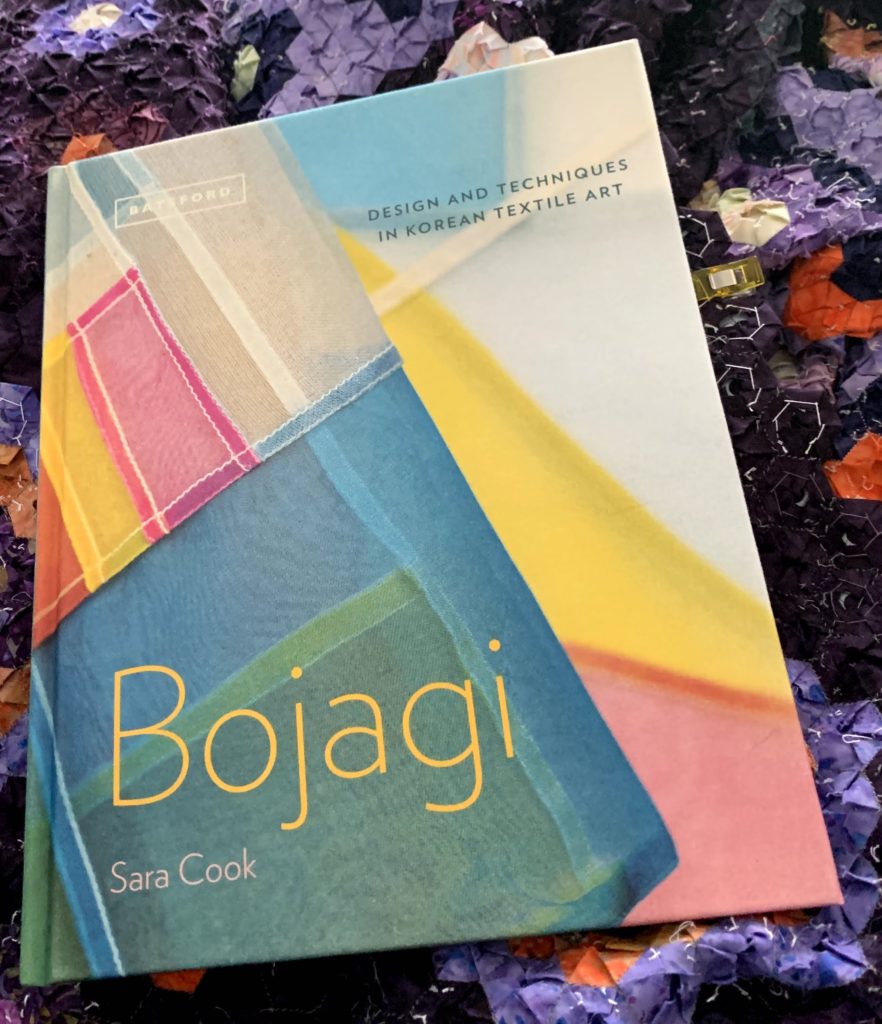
Sara Cook’s Bojagi book is beautiful, and was very helpful. I wanted to do flat felled seams, to make my piece reversible. I love the idea of making one to hang in my window, either in my kitchen or my bedroom. For now, I just played with a smaller piece.
I decided to do my experiment using silk organza, to really play with the translucency of the fabrics. That meant a little bit of online shopping, poor me. I went to Etsy, and picked up a mystery pack of 1/2 yard cuts. I was really hoping for a pack of smaller scraps, but I wasn’t able to find that. The fabric I received was beautiful.
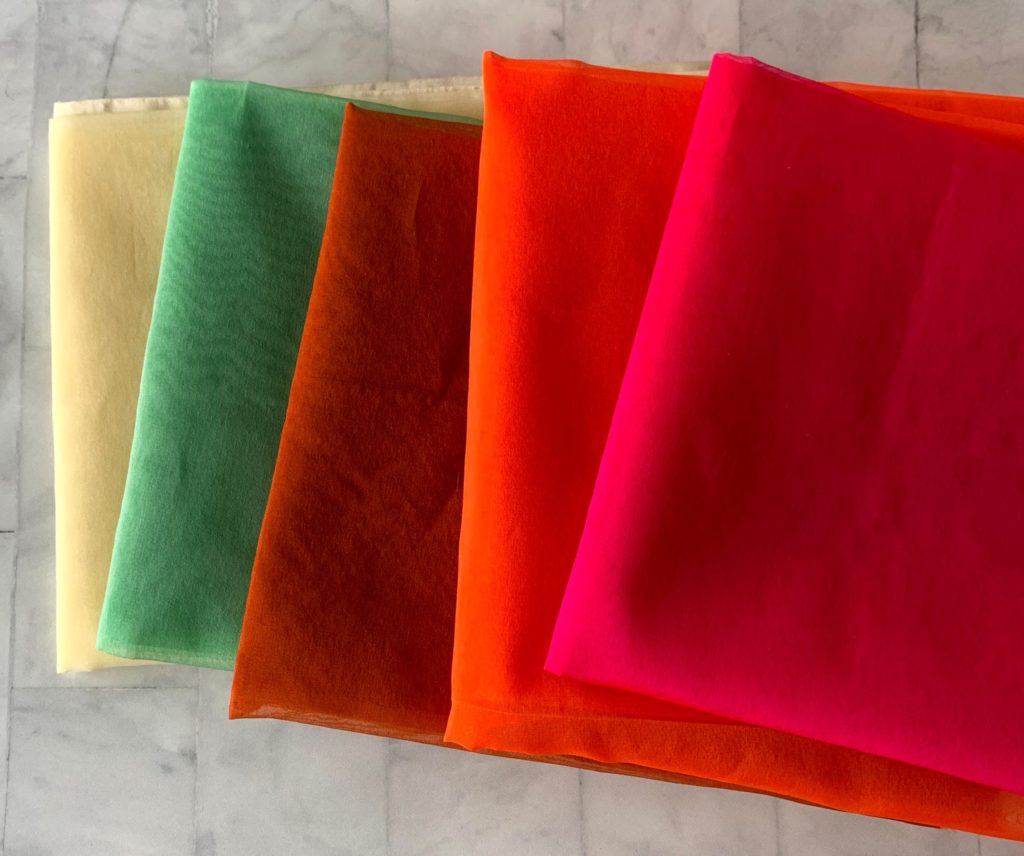
The only special tool I needed was a Hera marker. I accidentally ordered a point turner from Amazon, but it worked. The only tip I would give you, if you are working with silk organza, is don’t press down too hard. Use a little back and forth motion, to prevent scrunching of fabric, and be gentle. I was surprised that the hera marker, when used with all of my force, cut a hole in my fabric.
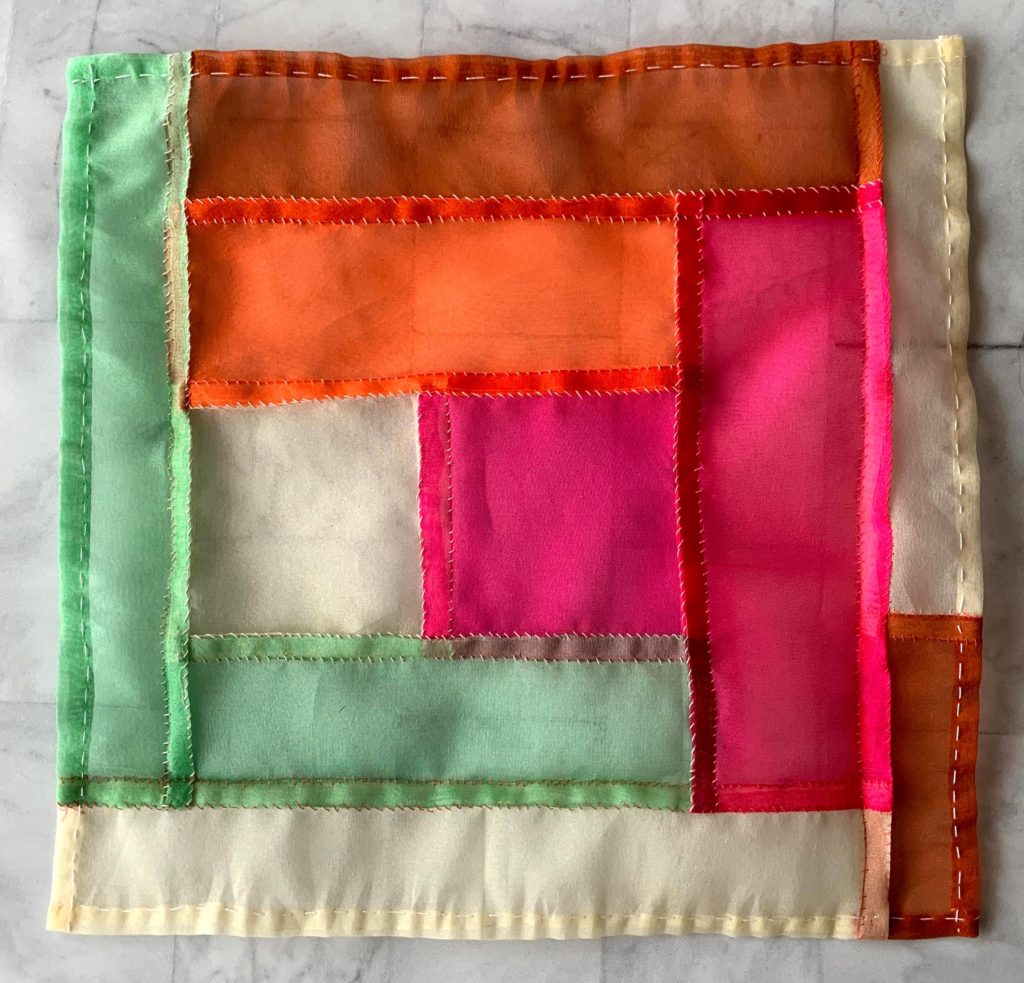
This is the piece I made. It is about 10″ square. I made it small intentionally. First, I wanted a finished project for my meeting. I also want it to fit into my stitch journal. (More on that later.) I really love how the silk changes colors when it is overlapped. I cannot even describe how cool it is when you have it in your hands and can hold it up to the light.
One concept I can’t get my mind around is patch sizes to cut to pre-plan the project. Since one side of the patch gets turned under more than the other side, I just cut my pieces one at a time and let the project grow organically. The instructions I read online, and the instructions in the book did not make sense to my brain. I didn’t understand what was going on until I actually had the fabric in my hands and was folding and pinning.
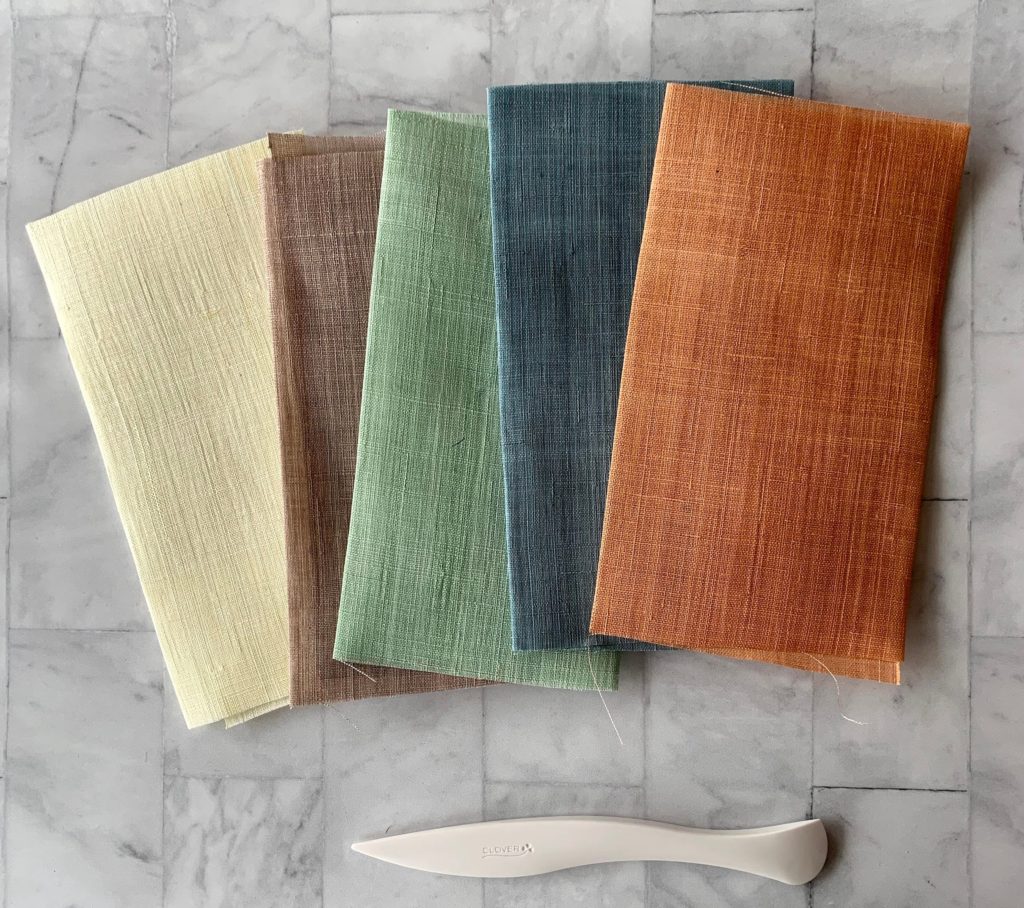
The traditional fabric mentioned in the tutorials I read was ramie. I was shocked, shocked I tell you, to find out that there was a fabric I had NEVER heard of. Me. The expert on all things textiles in my house. (Where everyone except Me and Mom refer to fabric as “scratchy” vs “not scratchy”.)
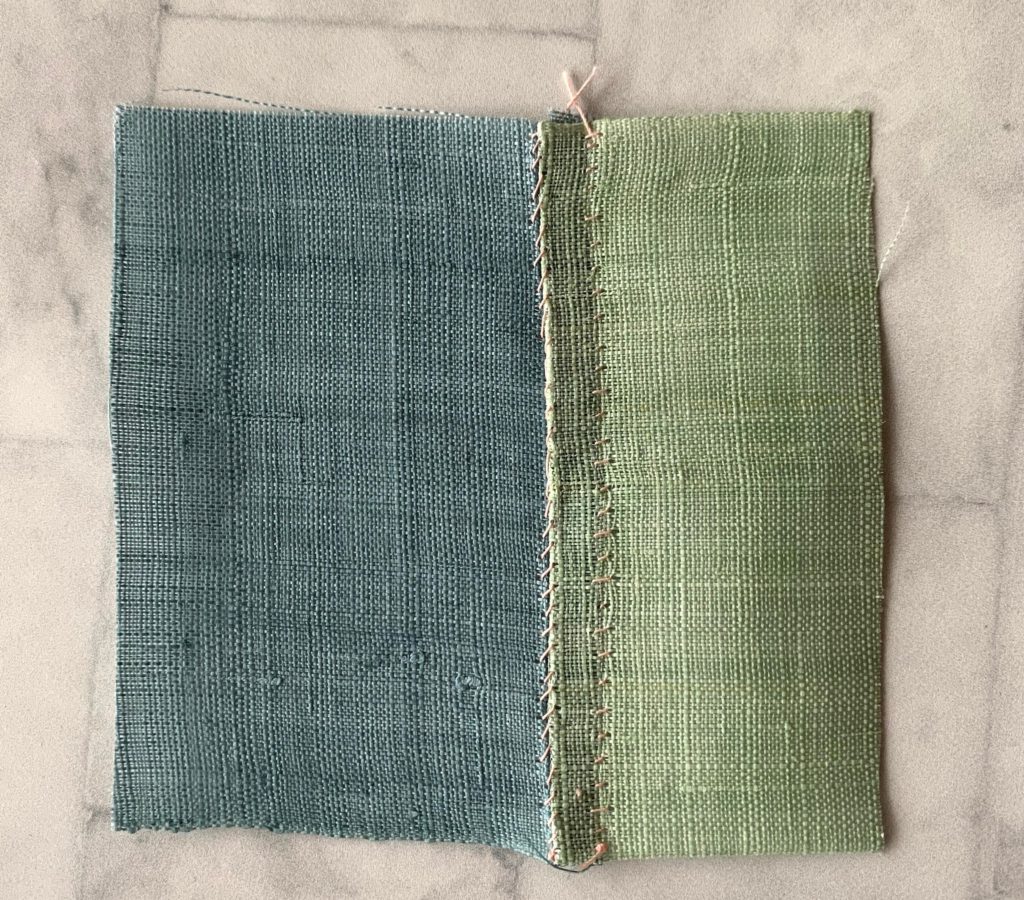
My ramie shipped from Australia, so I haven’t had time to play with it very much yet. I can tell you, it feels like really stiff linen. I’m not sure how Korean folks are making clothes with it – I hope it softens up a lot in the wash, or those poor folks in traditional clothes must be sooo chafed. I could probably make a Moravian star with this stuff without any paper at all.
My future plans include a small piece made with ramie, and another one made with quilting cotton. I also want to try making it by machine. So, you will be seeing more bojagi pieces from me. I really want to make myself a new bed quilt, and also some coordinating window hangings.
Special thanks to Megan from Quilt Lab for putting the original presentation together. It was very inspiring.
Do you ever take time to play with new techniques? I mean, really play. I give myself permission to play whenever I try something new or take a class. Permission to play means that I don’t have a set use in mind for whatever it is I’m making in class. If I don’t like it, I don’t feel any pressure to finish it. I also don’t use my best fabric for play. I use stuff I don’t care too much about, and again, if I don’t like it, it doesn’t get finished. I do try to really learn the technique. That way, I can make it my own, or if someone asks why I didn’t like it, I have a solid answer.
Quilt Lab is a club that meets monthly via Gotham Quilts. When allowed, we meet in person. Currently we are meeting on Zoom, which is almost as good, but I don’t get to go fabric petting afterwards. I’ve only written up one other experiment – you can read about it here. It is a great, supportive group of open-minded quilters. Plus, it only costs $30 per year, and there is never any pressure to make the monthly project. Sometimes I just drag in something I made in the past, but I get more out of the experience when I actually participate in real time.
Have fun, and happy quilting!
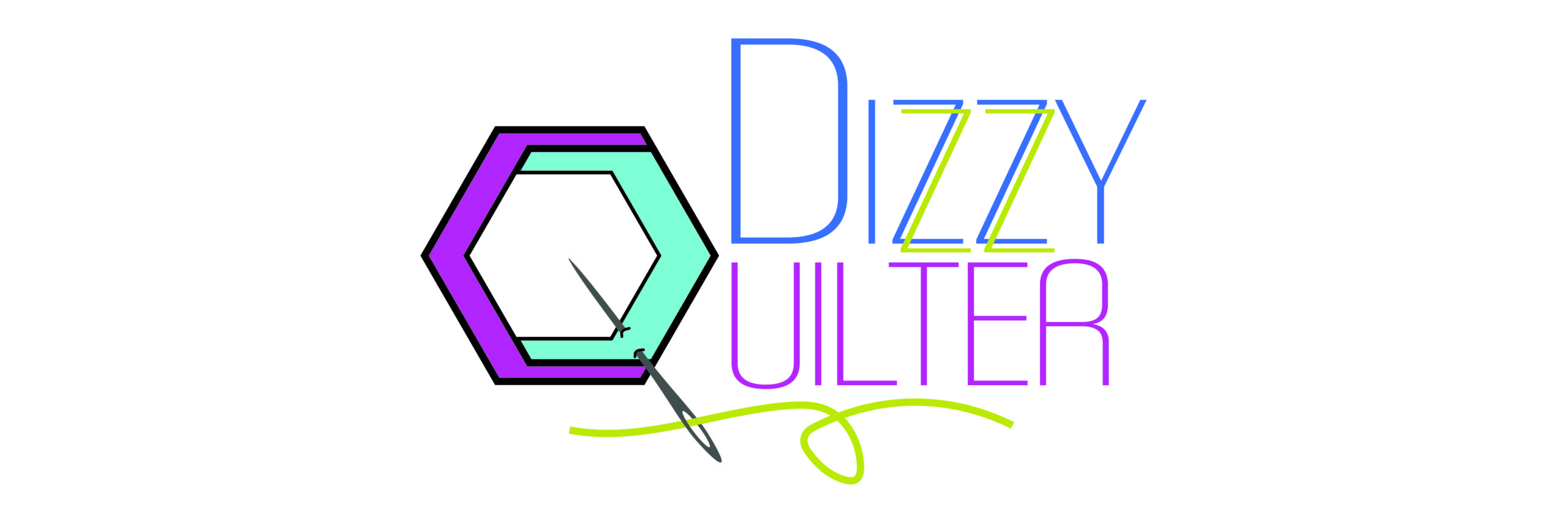
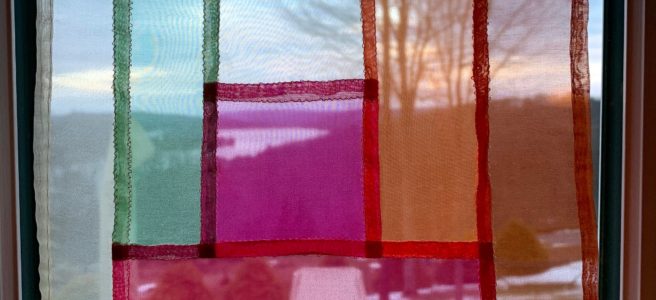
Curious if you had trouble with the fabric “behaving”, raveling etc? I like the look of the fabric from Australia, the muted colors appeal to me. Interesting work. I like the idea that you gave yourself “permission to play” and “permission to not finish”. I have a couple of pieces from classes, where I loved the fabric but now feel terribly guilty for letting them sit as UFO’s.
I didn’t have any issue with fabric raveling. I also didn’t do a tremendous amount of handling – It was cut and put together pretty quickly. I think the ramie might be prone to that, but the stiffness will counteract it’s tendency to fall apart.
Small pieces are good to turn into little zipper pouches. I always like doing that, then getting them out of my studio.
I love this! I once wanted to make pieced roman shades, to have this sort of effect on a window….where some light needed to be diffused, kind of a stained glass approach. Love playing and giving myself permission to do it more this year.
Cool! I thought about roman shades a long time ago. Then I did some brief research into the process and never moved forward on the project.
Beautiful, delicate piece. It must have taken a lot of patience.
BTW I have a ramie jacket which is lovely to wear. It is quite old and has become softer and more comfortable over the years. Even though it is now faded, I still get compliments when I wear it.
Thank you! I don’t use patience with handwork – handwork is my relaxation. I use my patience on housework. Sometimes.
I’ll have to wash my ramie piece and see how it affects the hand of the fabric.
Oh, neat. I vaguely remember hearing about Korean piecing once a few years ago. It looks like it uses a French seam type of approach? Love the ramie colors, looks like a silky linen. I wonder if it softens after washed?
This version is different from a french seam, although my book demonstrated that one, too. One layer is wrapped all the way around the edge of the other layer. It’s like the fat seam on denim jeans.
Mariss says the ramie does soften after washing. It feels more like a coarse linen that had a whole bottle of starch dumped on it.
I really like that you are exploring both technique and different materials at the same time! I bet that the hera marker could really be hard on the softer silk organza!